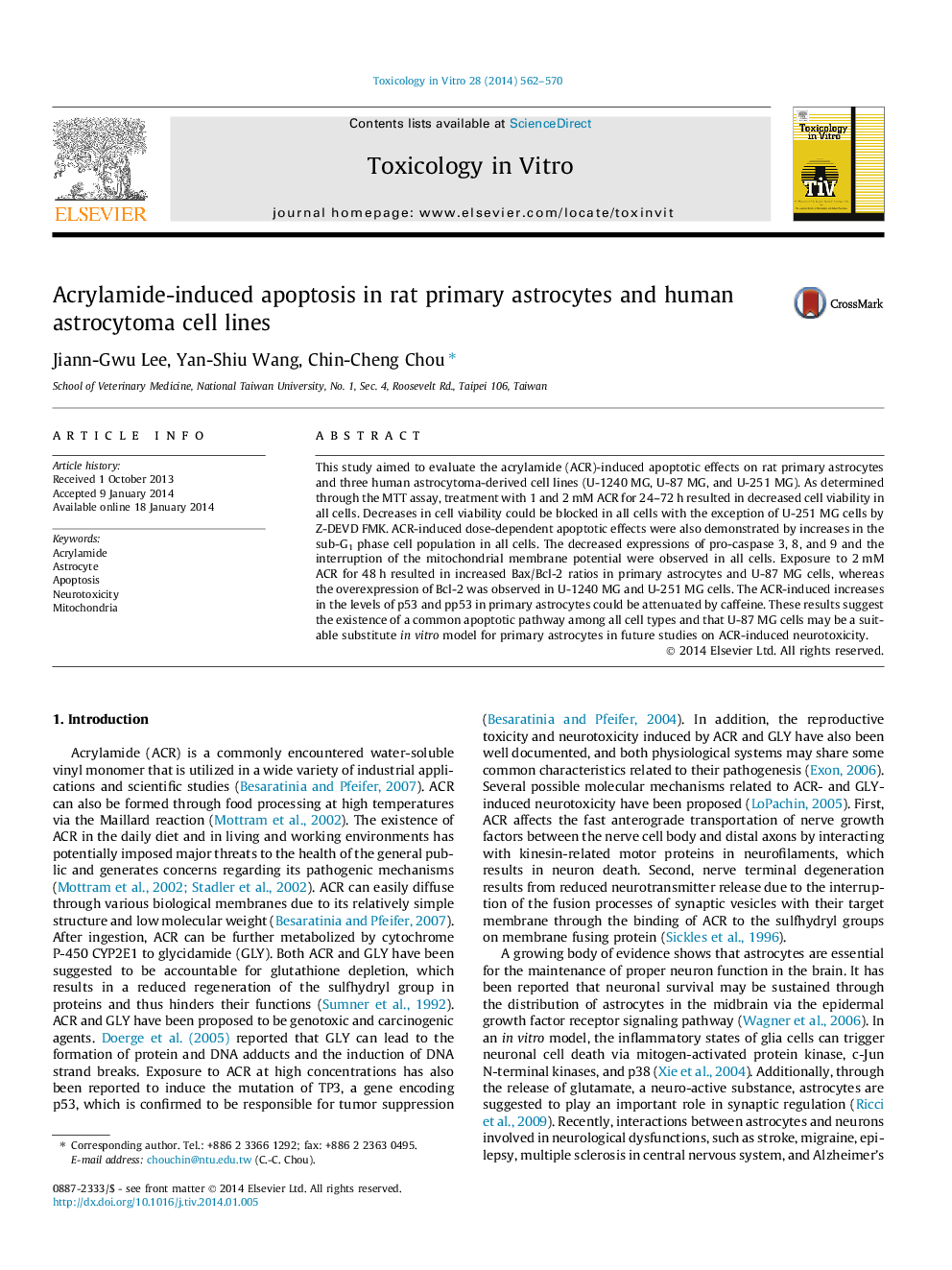| Article ID | Journal | Published Year | Pages | File Type |
|---|---|---|---|---|
| 5862028 | Toxicology in Vitro | 2014 | 9 Pages |
â¢Common apoptotic pathway might exist in rat astrocytes and human cell lines.â¢ACR-induced concentrations effects in apoptosis varied on astrocytoma cells.â¢U-87 MG cell line might be a good substitute for primary cells in ACR studies.
This study aimed to evaluate the acrylamide (ACR)-induced apoptotic effects on rat primary astrocytes and three human astrocytoma-derived cell lines (U-1240 MG, U-87 MG, and U-251 MG). As determined through the MTT assay, treatment with 1 and 2Â mM ACR for 24-72Â h resulted in decreased cell viability in all cells. Decreases in cell viability could be blocked in all cells with the exception of U-251 MG cells by Z-DEVD FMK. ACR-induced dose-dependent apoptotic effects were also demonstrated by increases in the sub-G1 phase cell population in all cells. The decreased expressions of pro-caspase 3, 8, and 9 and the interruption of the mitochondrial membrane potential were observed in all cells. Exposure to 2Â mM ACR for 48Â h resulted in increased Bax/Bcl-2 ratios in primary astrocytes and U-87 MG cells, whereas the overexpression of Bcl-2 was observed in U-1240 MG and U-251 MG cells. The ACR-induced increases in the levels of p53 and pp53 in primary astrocytes could be attenuated by caffeine. These results suggest the existence of a common apoptotic pathway among all cell types and that U-87 MG cells may be a suitable substitute in vitro model for primary astrocytes in future studies on ACR-induced neurotoxicity.
